85–87 Westborough, Scarborough, North Yorkshire, YO11 1JW
Originally the Liberal Club, this pub was officially opened in October 1895 by the Liberal politician Lord Rosebery, who had been prime minister until earlier that year.
Photographs and text about The Lord Rosebery.
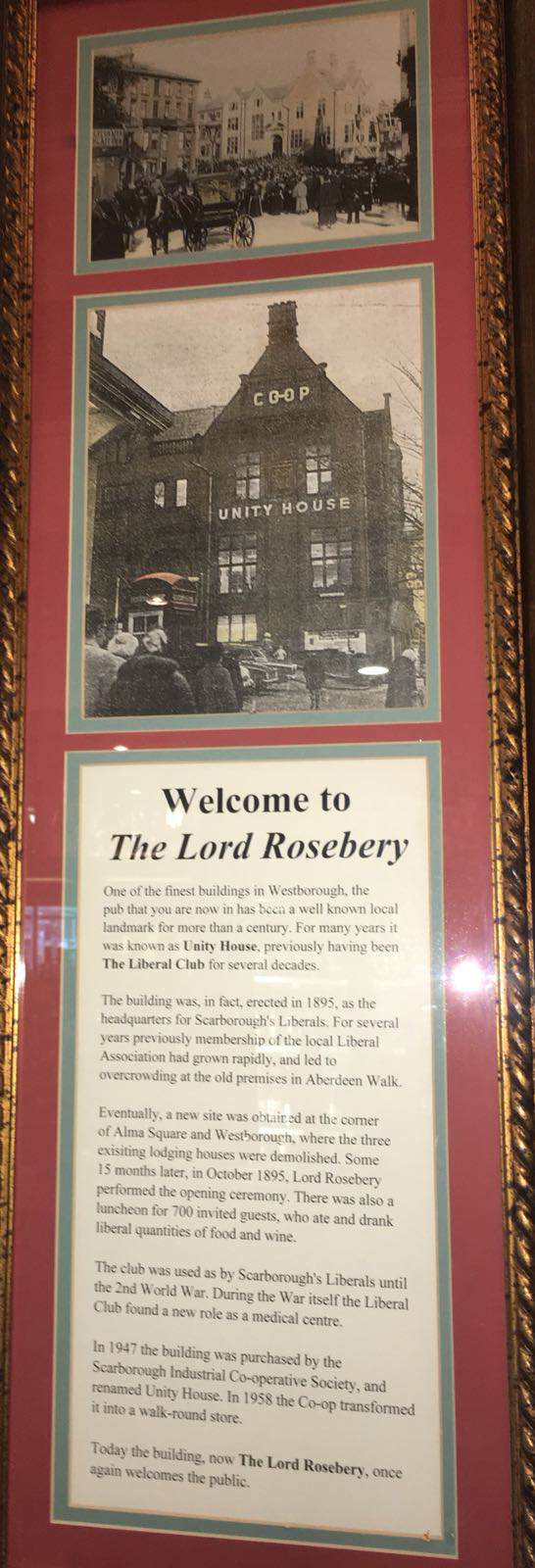
The text reads: One of the finest buildings in Westborough, the pub that you are now in has been a well-known local landmark for more than a century. For many years it was known as Unity House, previously having been The Liberal Club for several decades.
The building was, in fact, erected in 1895, as the headquarters for Scarborough’s Liberals. For several years previously membership of the local Liberal Association has grown rapidly, and led to overcrowding at the old premises in Aberdeen Way.
Eventually, a new site was obtained at the corner of Alma Square and Westborough, where the three existing lodging houses were demolished. Some 15 months later, in October 1895, Lord Rosebery performed the opening ceremony. There was also a luncheon for 700 invited guests, who ate and drank liberal quantities of food and wine.
The club was used as by Scarborough’s Liberals until the 2nd World War. During the war itself the Liberal Club found a new role as a medical centre.
In 1947 the building was purchased by the Scarborough Industrial Co-operative Society, and renamed Unity House. In 1958 the Co-op transformed it into a walk-round store.
Today the building, now The Lord Rosebery, once again welcomes the public.
Prints and text about the Assembly Rooms.
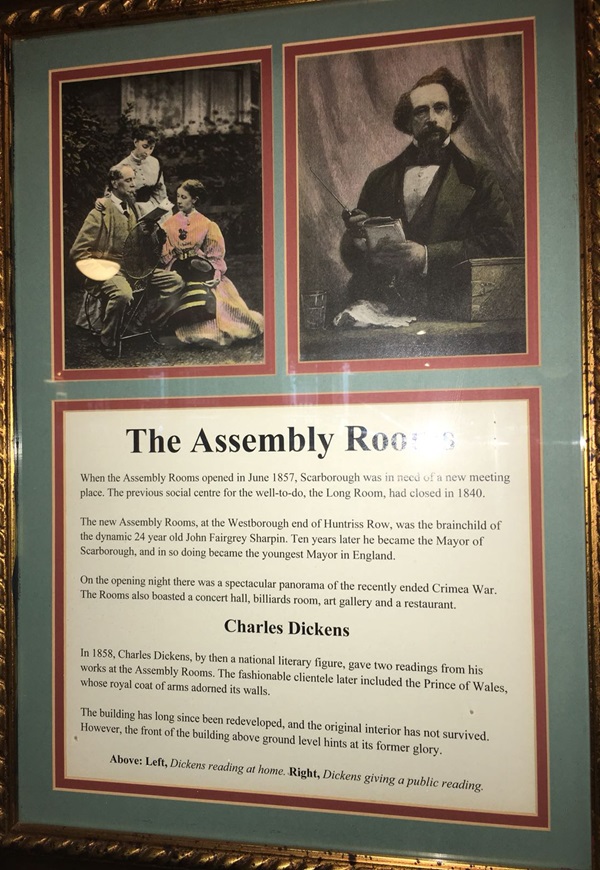
The text reads: When the Assembly Rooms opened in June 1857, Scarborough was in need of a new meeting place. The previous social centre for the well-to-do, the Long Room, had closed in 1840.
The new Assembly Rooms, at the Westborough end of Huntriss Row, was the brainchild of the dynamic 24 year old John Fairgrey Sharpin. Ten years later he became the Mayor of Scarborough, and in doing so became the youngest Mayor in England.
On the opening night there was a spectacular panorama of the recently ended Crimea War. The Rooms also boasted a concert hall, billiards room, art gallery and a restaurant.
In 1858, Charles Dickens, by then a national literary figure, gave two readings from his works at the Assembly Rooms. The fashionable clientele later included the Prince of Wales, whose royal coat of arms adorned its walls.
The building has long since been redeveloped, and the original interior has not survived. However, the front of the building above ground level hints at its former glory.
Above: left, Dickens reading at home, right, Dickens giving a public reading.
Prints and text about Anne Bronte.
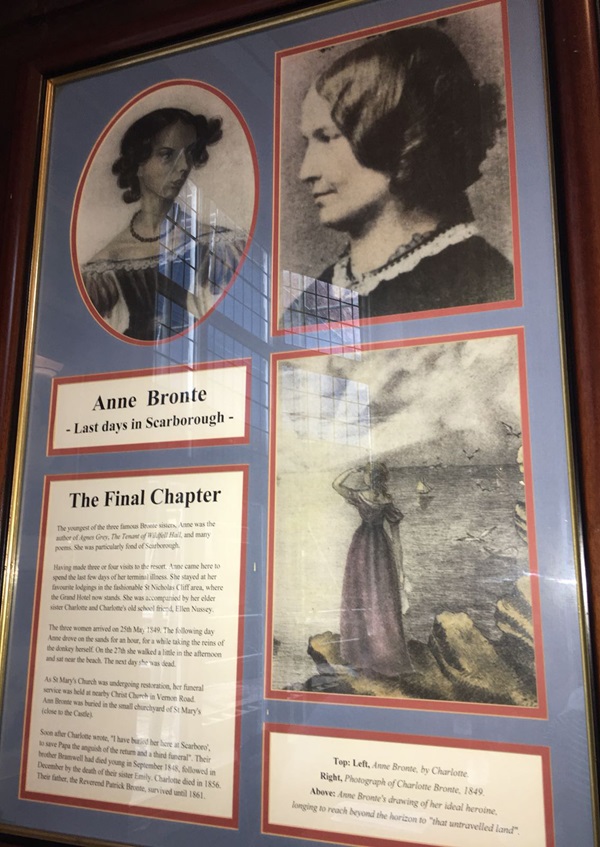
The text reads: The youngest of the three famous Bronte sisters, Anne was the author of Agnes Grey, The Tenant of Wildfell Hall, and many poems. She was particularly fond of Scarborough.
Having made three or four visits to the resort, Anne came here to spend the last few days of her terminal illness. She stayed at her famous lodgings in the fashionable St Nicholas Cliff area, where the grand hotel now stands. She was accompanied by her elder sister Charlotte and Charlotte’s old school friend, Ellen Nussey.
The three women arrived on 25 May 1849. The following day Anne drove on the sands for an hour, for a while taking the reins of the donkey herself. On the 27 she walked a little in the afternoon and sat near the beach. The next day she was dead.
As St Mary’s Church was undergoing restoration, her funeral service held at nearby Christ Church in Vernon Road. Ann Bronte was buried in the small churchyard of St Mary’s (close to the castle).
Soon after Charlotte wrote, “I have buried her here at Scarboro’, to save Papa the anguish of the return and a third funeral”. Their brother Bramwell had died young in September 1848, followed in December by the death of their sister Emily. Charlotte died in 1856. Their father, the Reverend Patrick Bronte, survived until 1861.
Illustrations and text about St Martin-on-the-Hill.
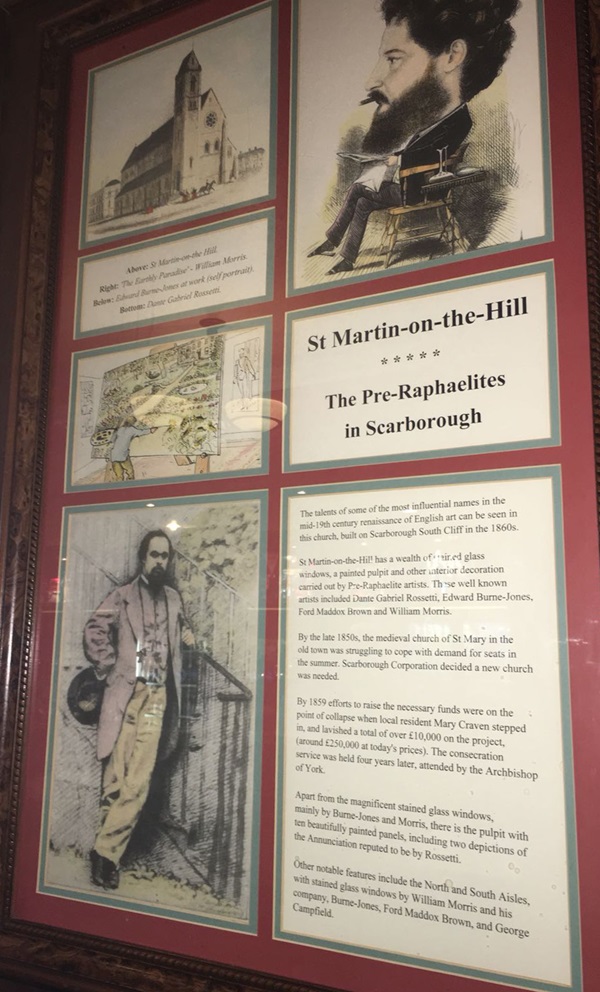
The text reads: The talent of some of the most influential names in the mid-19th century renaissance of English art can be seen in this church, built on Scarborough South Cliff in the 1860s.
St Martin-on-the-Hill has a wealth of stained glass windows, a painted pulpit and other interior decoration carried out by the Pre-Raphaelite artists. These well-known artists included Dante Gabriel Rossetti, Edward Burne-Jones, Ford Maddox Brown and William Morris.
By the late 1850s, the medieval church of St Mary in the old town was struggling to cope with demand for seats in the summer. Scarborough Corporation decided a new church was needed.
By 1859 efforts to raise the necessary funds were on the point of collapse when local resident Mary Craven stepped in, and lavished a total of over £10,000 on the project, (around £250,000 at today’s prices). The consecration service was held four years later, attended by the Archbishop of York.
Apart from the magnificent stained-glass windows, mainly by Burne-Jones and Morris, there is the pulpit with ten beautifully painted panels, including two deceptions of the Annunciation reputed to be by Rossetti.
Other notable features include the North and South Aisles, with stained-glass windows by William Morris and his company, Burne-Jones, Ford Maddox Brown, and George Campfield.
Prints and text about John Atkinson Grimshaw.
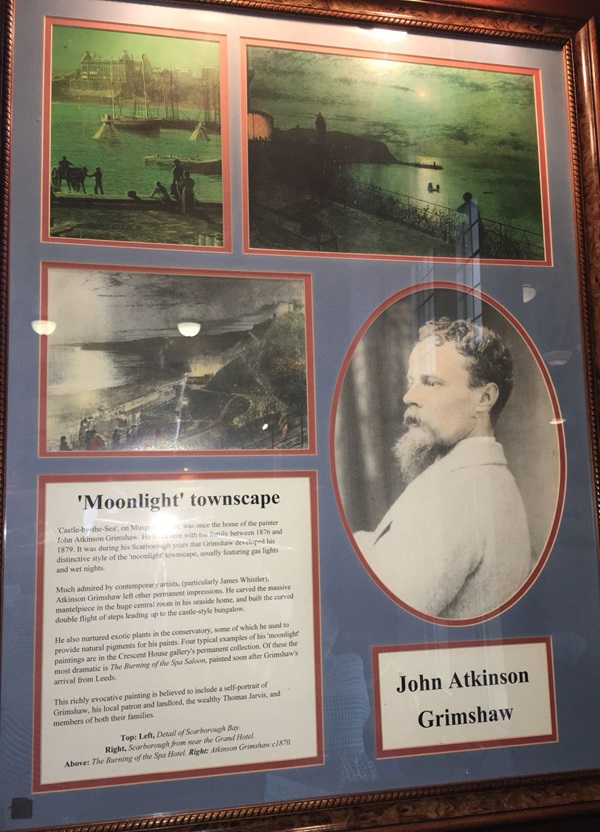
The text reads: Castle-by-the-Sea, on Musgrave Place, was once the home of the painter John Atkinson Grimshaw. He lived here with his family between 1876 and 1879. It was during his Scarborough years that Grimshaw developed his distinctive style of the moonlight townscape, usually featuring gas lights and wet nights.
Much admired by contemporary artists, (particularly James Whistler), Atkinson Grimshaw left other permanent impressions. He carved the massive mantelpiece in the huge central room in his seaside home, and built the curved double flight of steps leading up to the castle-style bungalow.
He also nurtured exotic plants in the conservatory, some of which he used to provide natural pigments for his paints. Four typical examples of his moonlight paintings are in the Crescent House gallery’s permanent collection. Of these the most dramatic is The Burning of the Spa Saloon, painted soon after Grimshaw’s arrival from Leeds.
This richly evocative painting is believed to include a self-portrait of Grimshaw, his local patron and landlord, the wealthy Thomas Jarvis, and members of both their families.
Top: left, detail of Scarborough Bay, right, Scarborough from near the Grand Hotel
Above: The Burning of the Spa Hotel
Right: Atkinson Grimshaw, c1870.
A print ad text about the King Richard III House.

The text reads: Further evidence of Scarborough’s royal links can still be seen on the seafront close to the harbour, in the King Richard III House. Richard Plantagenet is reputed to have stayed at this house on Sandside when he was still Lord High Admiral to his brother King Edward IV.
In front of the building there is a grotesque carving of a cloven footed creature, chained and caged. It is doubled-up wearing a crown, grinning fiendishly, with a skull in one hand. This stone caricature is considered to represent the later unflattering Tudor portrayal of Richard III.
King Richard III House is said to conceal medieval stone walls, indicating a much earlier building than the present Elizabethan style structure. Inside in an upper room, known as the Kings bedchamber, there is an ornamental plaster ceiling. It was developed long after Richard’s death, but its centrepiece is the Rose of York – Richard’s family emblem.
During his short reign as king (1483-85), Richard stayed at Scarborough Castle during visits to the town. When the ‘Navy of the North’ was based at Scarborough Harbour, Richard is said to have taken command of the fleet at least once, while warfare continued with France.
Top: King Richard III.
Prints and text about George Fox.
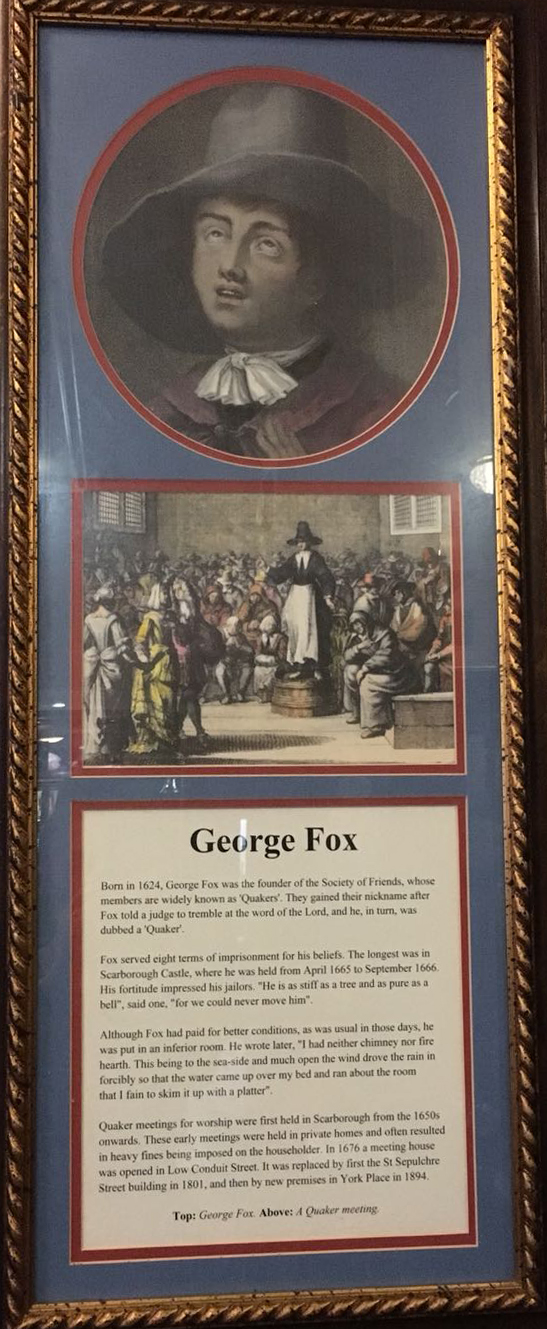
The text reads: Born in 1624, George Fox was the founder of the Society of Friends, whose members are widely known as Quakers. They gained their nickname after Fox told a judge to tremble at the word of the Lord, and he, in turn, was dubbed a Quaker.
Fox served eight terms of imprisonment for his beliefs. The longest was in Scarborough Castle, where he was held from April 1665 to September 1666. His fortitude impressed his jailors. “He is as stiff as a tree and as pure as a bell”, said one, “for we could never move him”.
Although Fox had paid for better conditions, as was usual in those days, he was put in an inferior room. He wrote later, “I had neither chimney nor fire hearth. This being to the sea-side and much open the wind drove the rain in forcibly so that the water came up over my bed and ran about the room that I fain to skim it up with a platter”.
Quaker meetings for worship were first held in Scarborough from the 1650s onwards. These early meetings were held in private homes and often resulted in heavy fines being imposed on the householder. In 1676 a meeting house was opened in Low Conduit Street. It was replaced by first the St Sepulchre Street building in 1801, and then by new premises in York Place in 1894.
Top: George Fox
Above: A Quaker meeting.
Illustrations and text about Scarborough Castle.
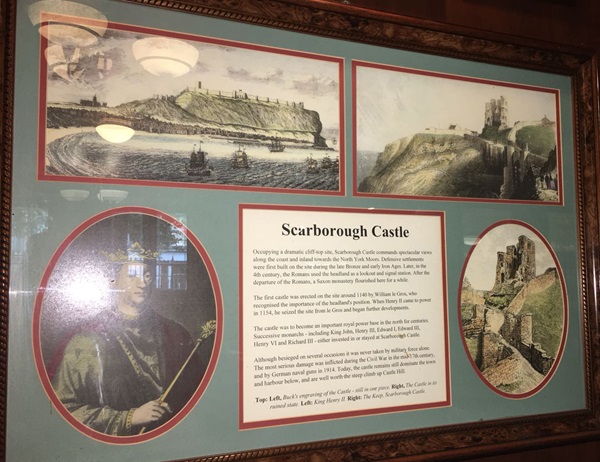
The text reads: Occupying a dramatic cliff-top site, Scarborough Castle commands spectacular views along the coast and inland towards the North York Moors. Defensive settlements were first built on the site during the late Bronze and early Iron Ages. Later, in the 4th century, the Romans used the headland as a lookout and signal station. After the departure of the Romans, a Saxon monastery flourished here for a while.
The first castle was erected on the site around 1140 by William le Gros, who recognised the importance of the headlands position. When Henry II came to power in 1154, he seized the site from le Gros and began further developments.
The castle was to become an important royal power base in the north force for centuries. Successive monarchs – including King John, Henry III, Edward I, Edward III, Henry IV and Richard III – either invested in or stayed at Scarborough Castle.
Although besieged on several occasions it was never taken by military force alone. The most serious damage was inflicted during the Civil War in the mid-17th century and by German naval guns in 1914. Today, the castle remains still dominate the town and harbour below, and are well worth the steep climb up Castle Hill.
Top: left, Buck’s engraving of the castle – still in one piece, right, the castle in its ruined state
Left: King henry VII
Right: The Keep, Scarborough Castle.
Prints and text about Frederic Leighton.
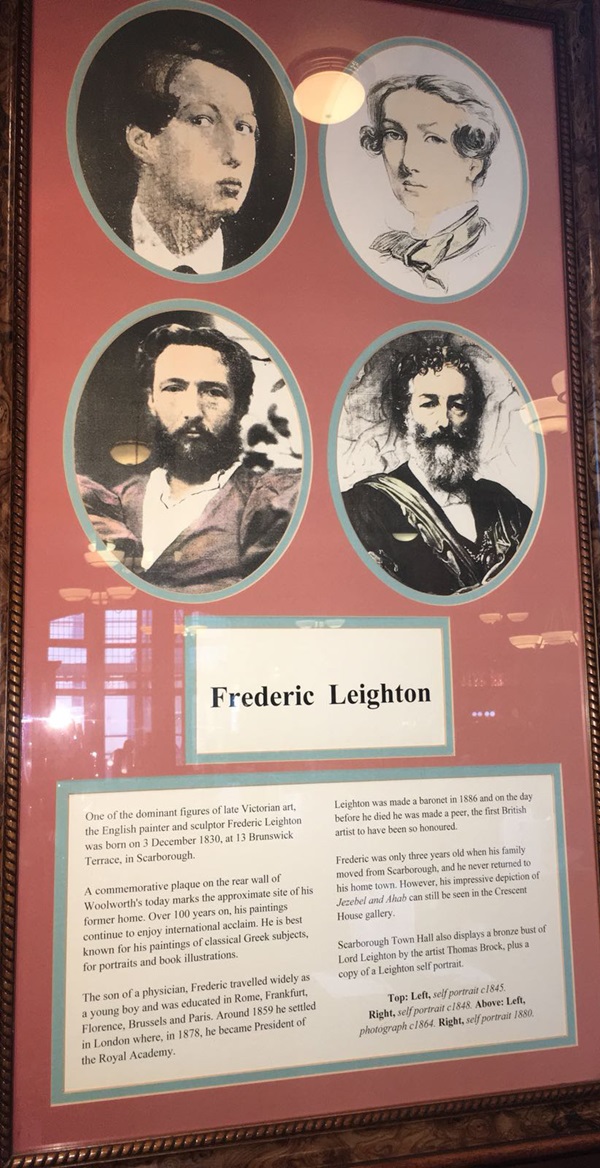
The text reads: One of the dominant figures of late Victorian art, the English painter and sculptor Frederic Leighton was born on 3 December 1830, in Brunswick Terrace, in Scarborough.
A commemorative plaque on the rear wall of Woolworth’s today marks the approximate site of his former home. Over 100 years on, his paintings continue to enjoy international acclaim. He is best known for his paintings of classical Greek subjects, for portraits and book illustrations.
The son of a physician, Frederic travelled widely as a young boy and was educated in Rome, Frankfurt, Florence, Brussels and Paris. Around 1859 he settled in London where, in 1878, he became President of the Royal Academy.
Leighton was made a baronet in 1886 and on the day before he died he was made a peer, the first British artist to have been so honoured.
Frederic was only three years old when his family moved from Scarborough, and he never returned to his home town. However, his impressive depiction of Jezebel and Ahab can still be seen in the Crescent House gallery.
Scarborough Town Hall also displays a bronze bust of Lord Leighton by the artist Thomas Brock, plus a copy of a Leighton self-portrait.
A photograph of M Salmet flying at Scarborough.
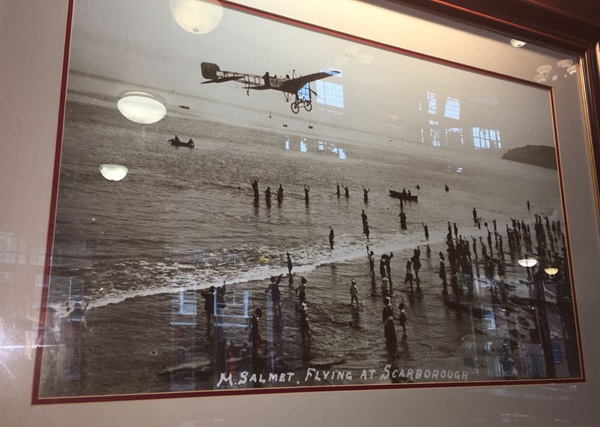
A photograph of the lighthouse, c1907.
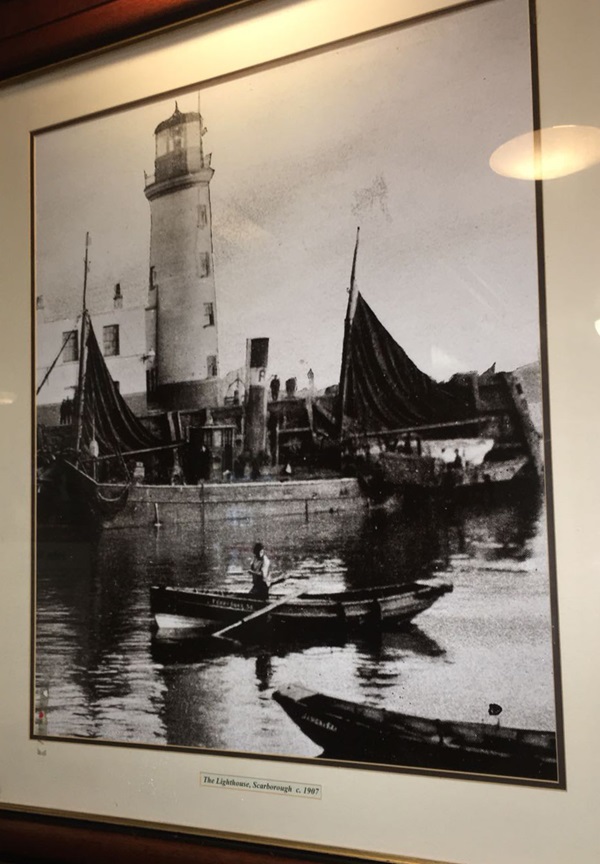
A photograph of wading in the North Bay, c1905.
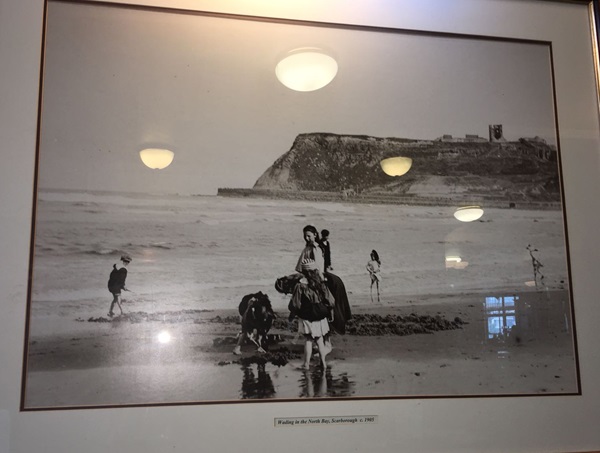
A photograph of North Bay, Scarborough, c1932.
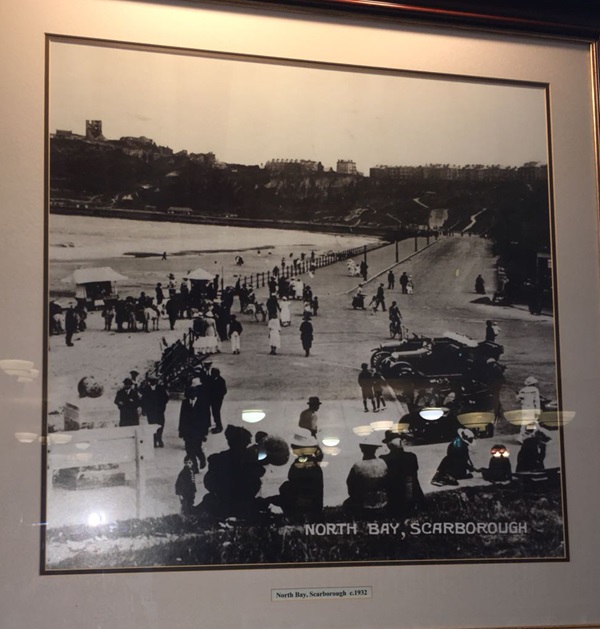
A photograph of Scarborough, c1905.
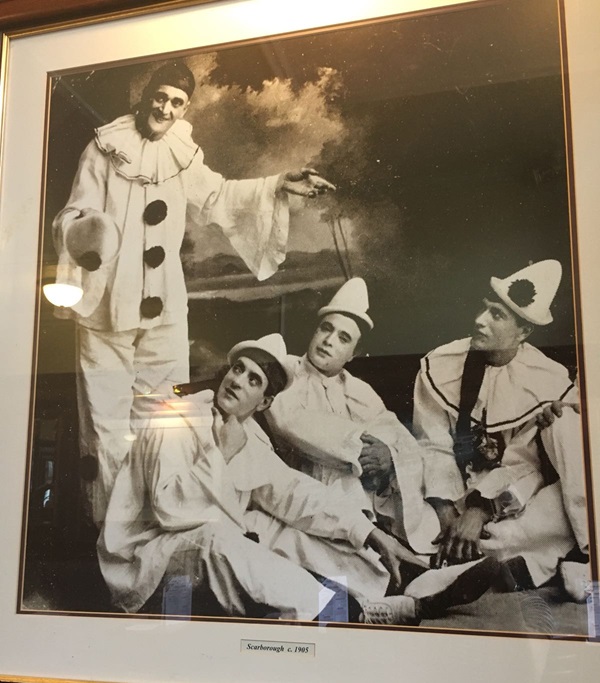
A photograph of Scarborough, c1900.
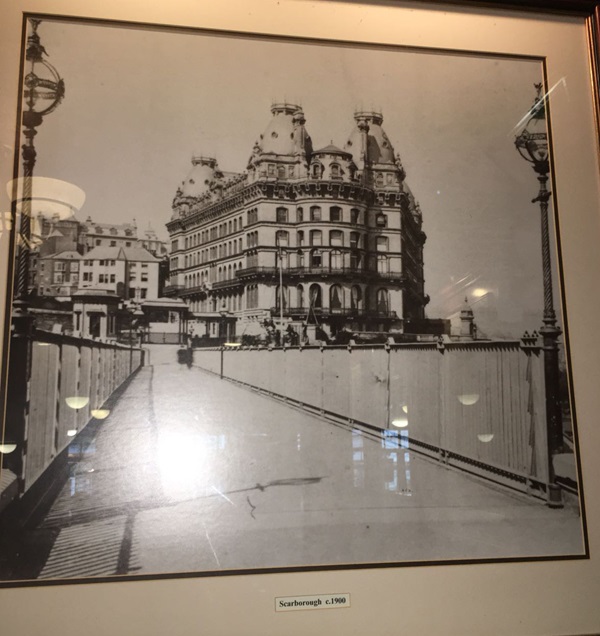
A photograph of the entrance to Marine Drive, Scarborough, c1910.
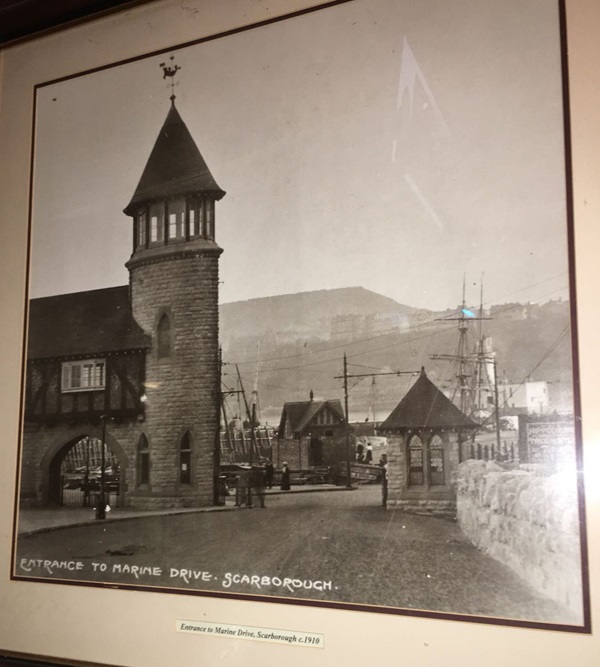
If you have information on the history of this pub, then we’d like you to share it with us. Please e-mail all information to: pubhistories@jdwetherspoon.co.uk